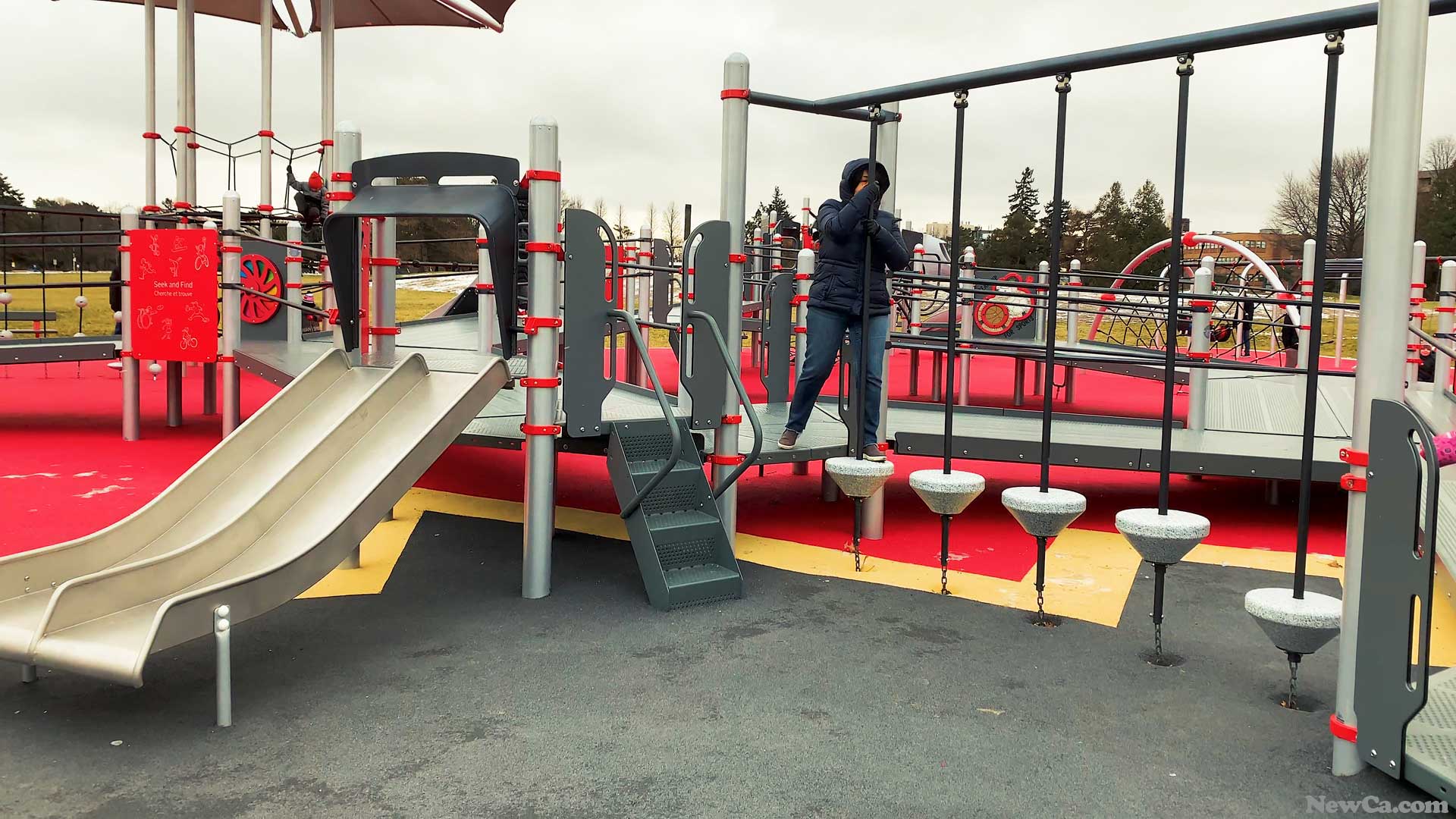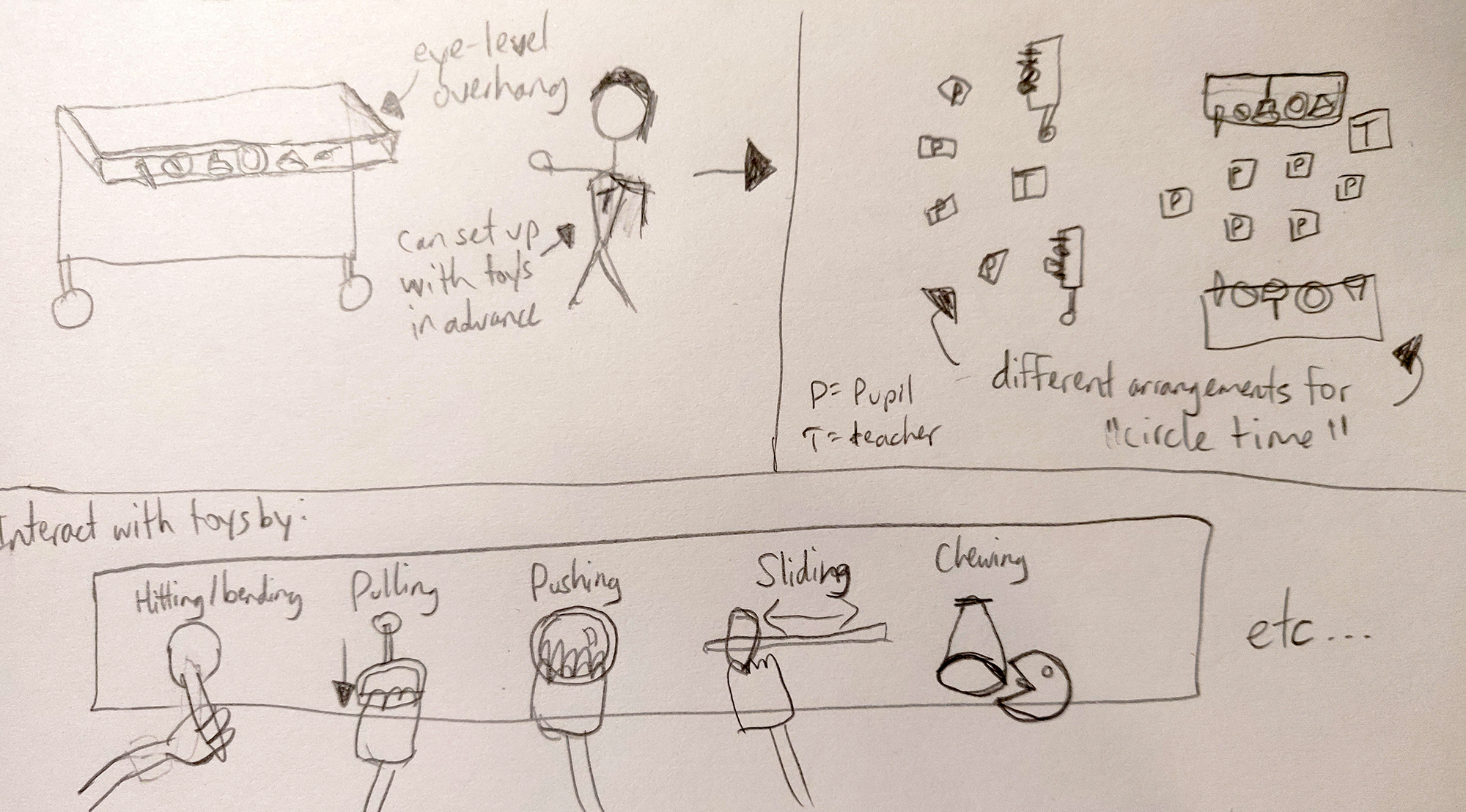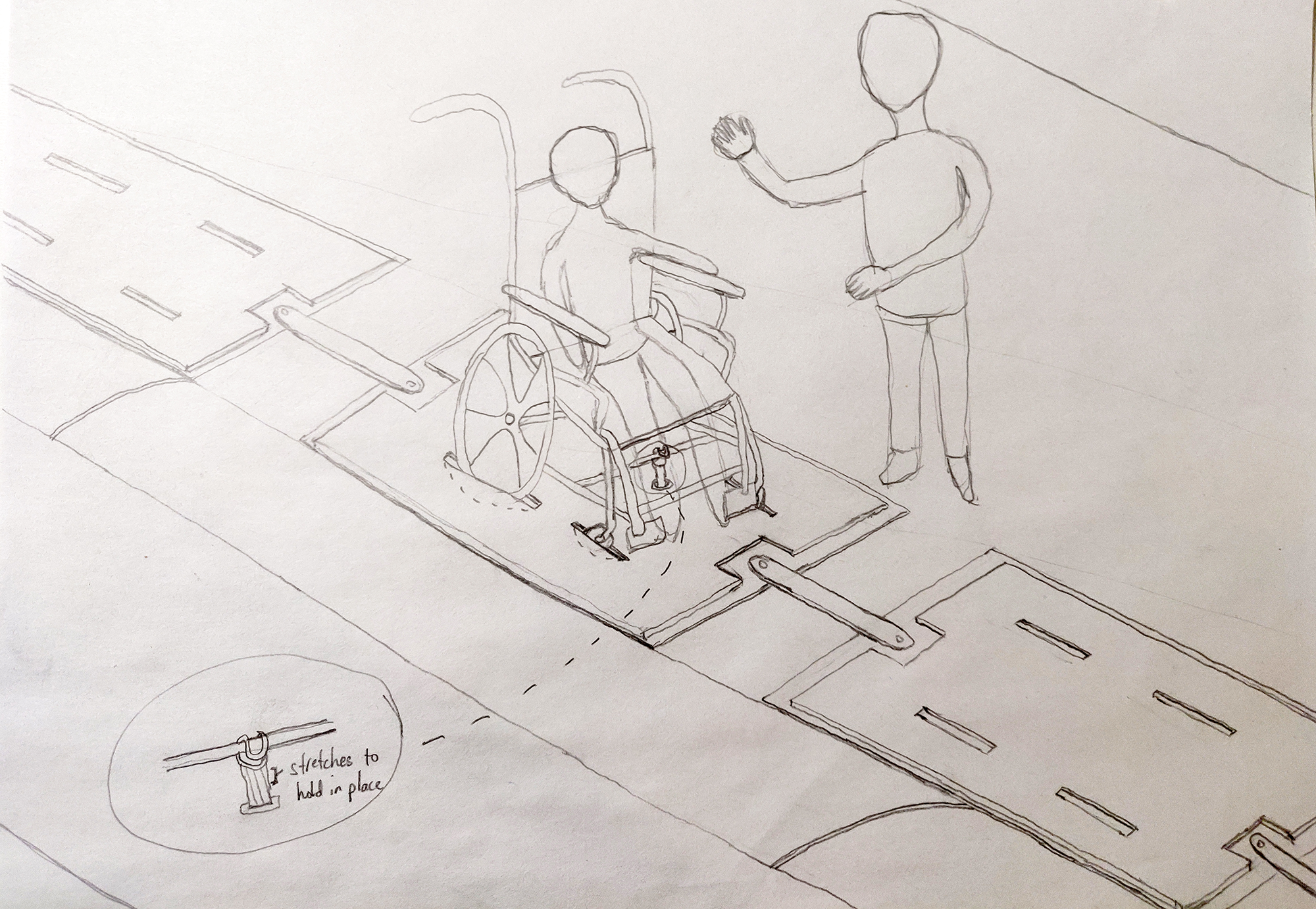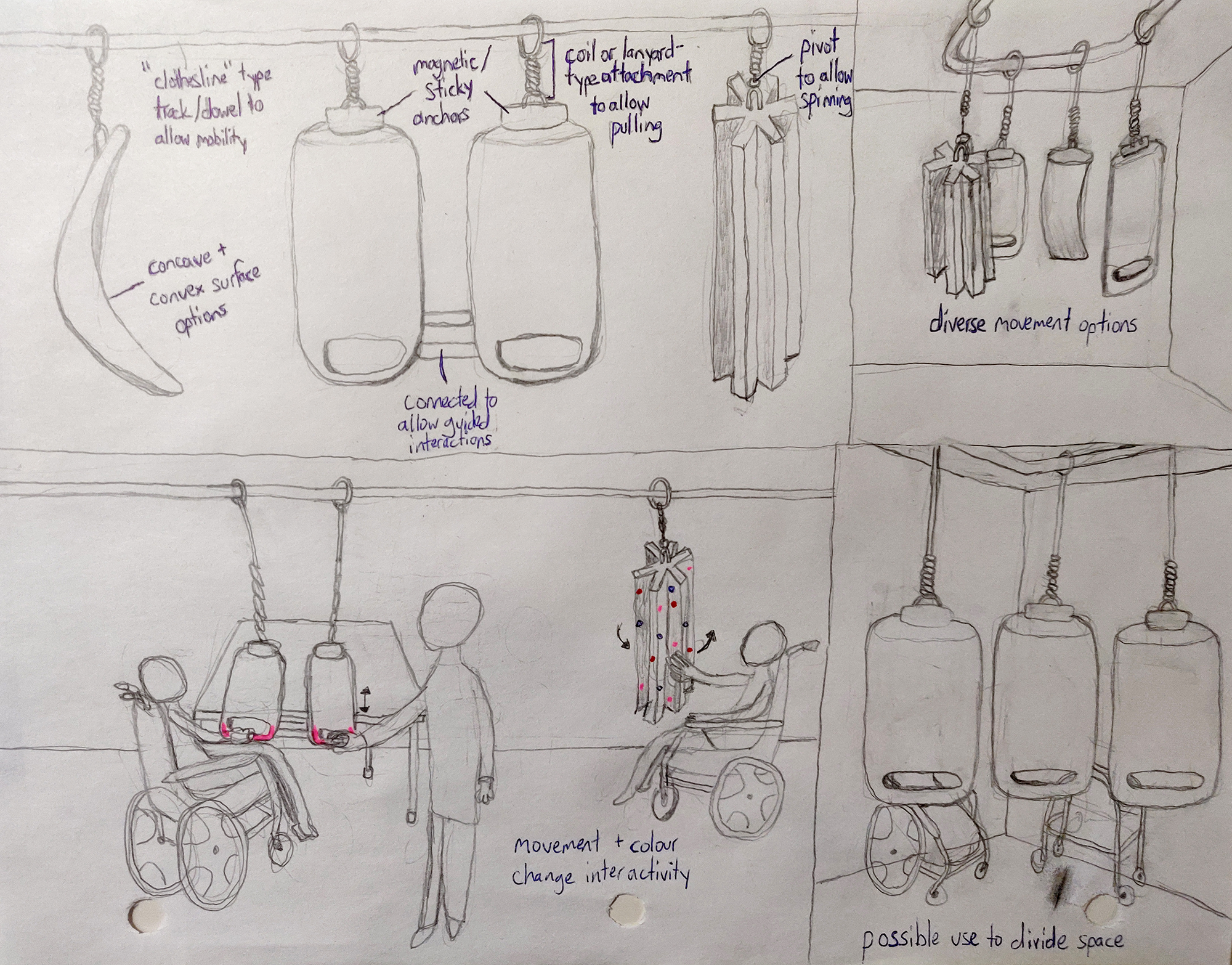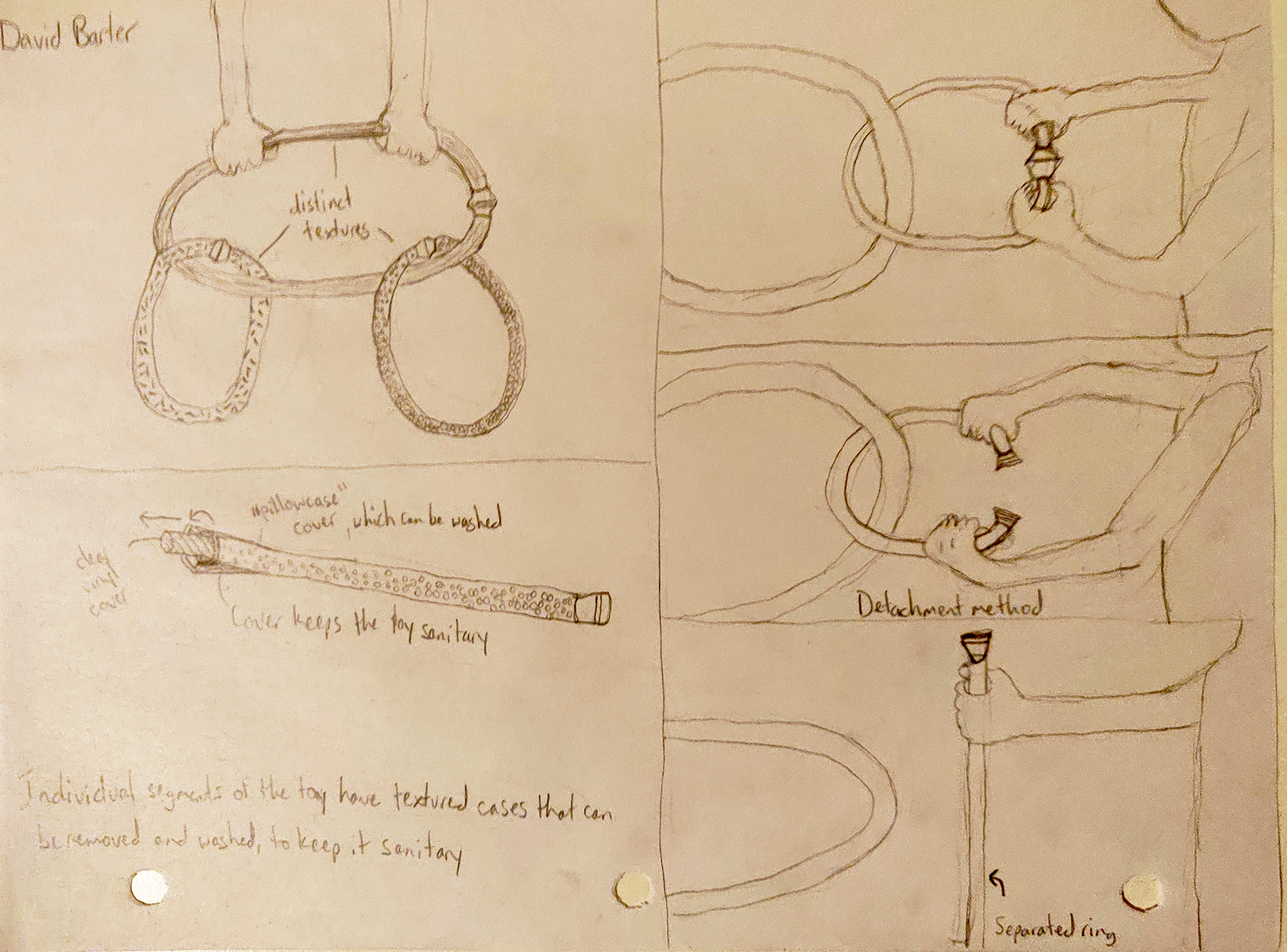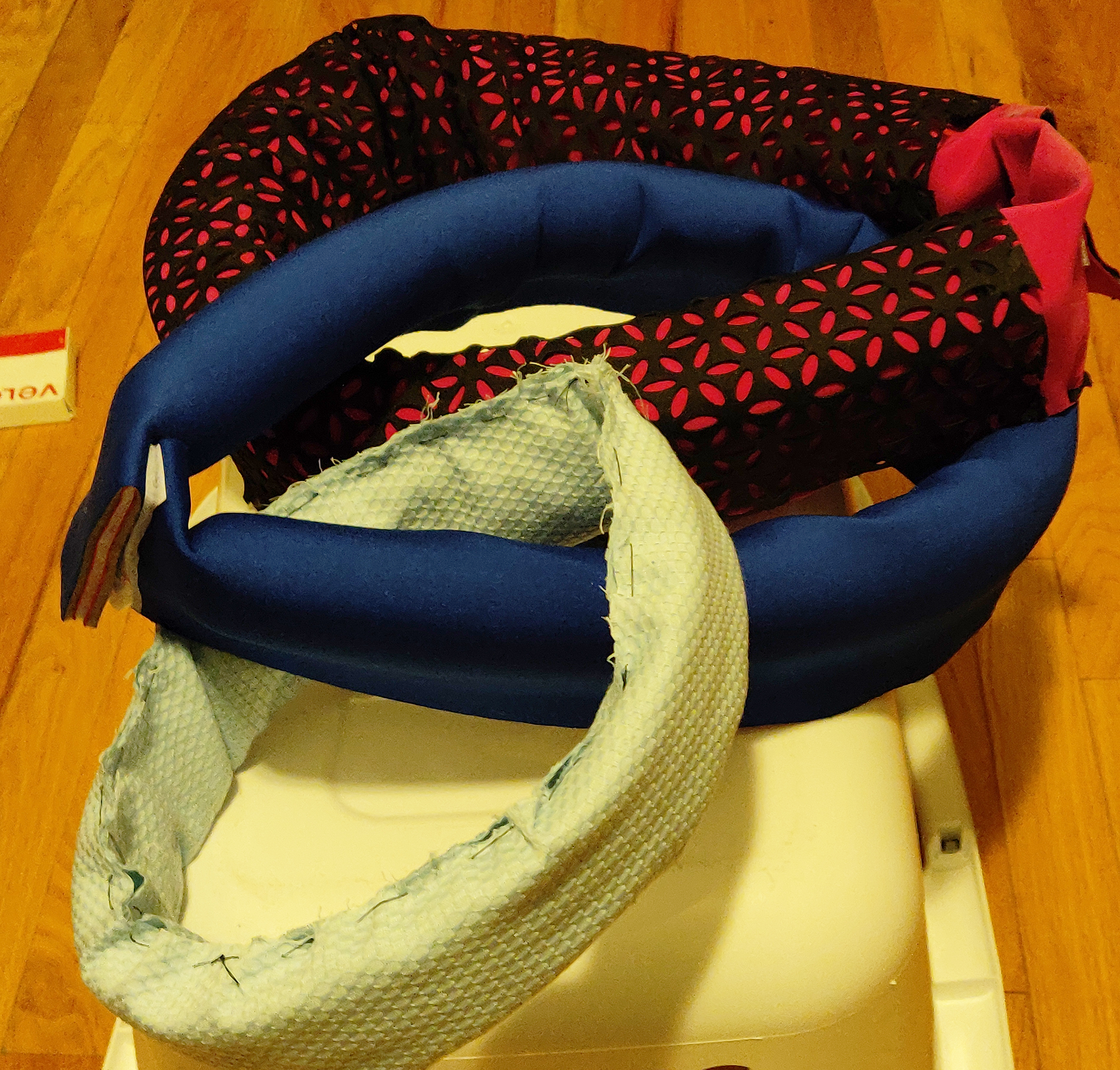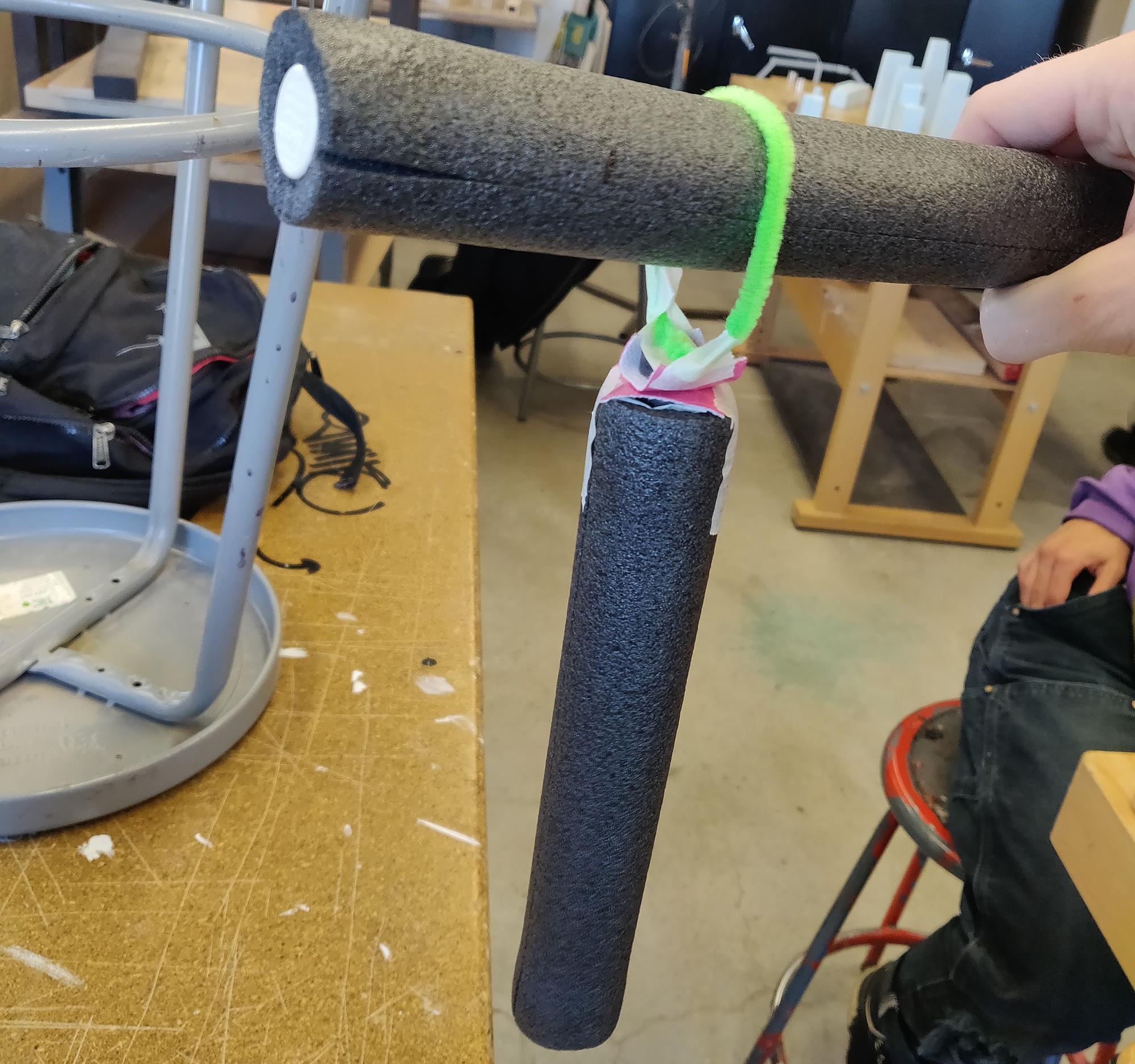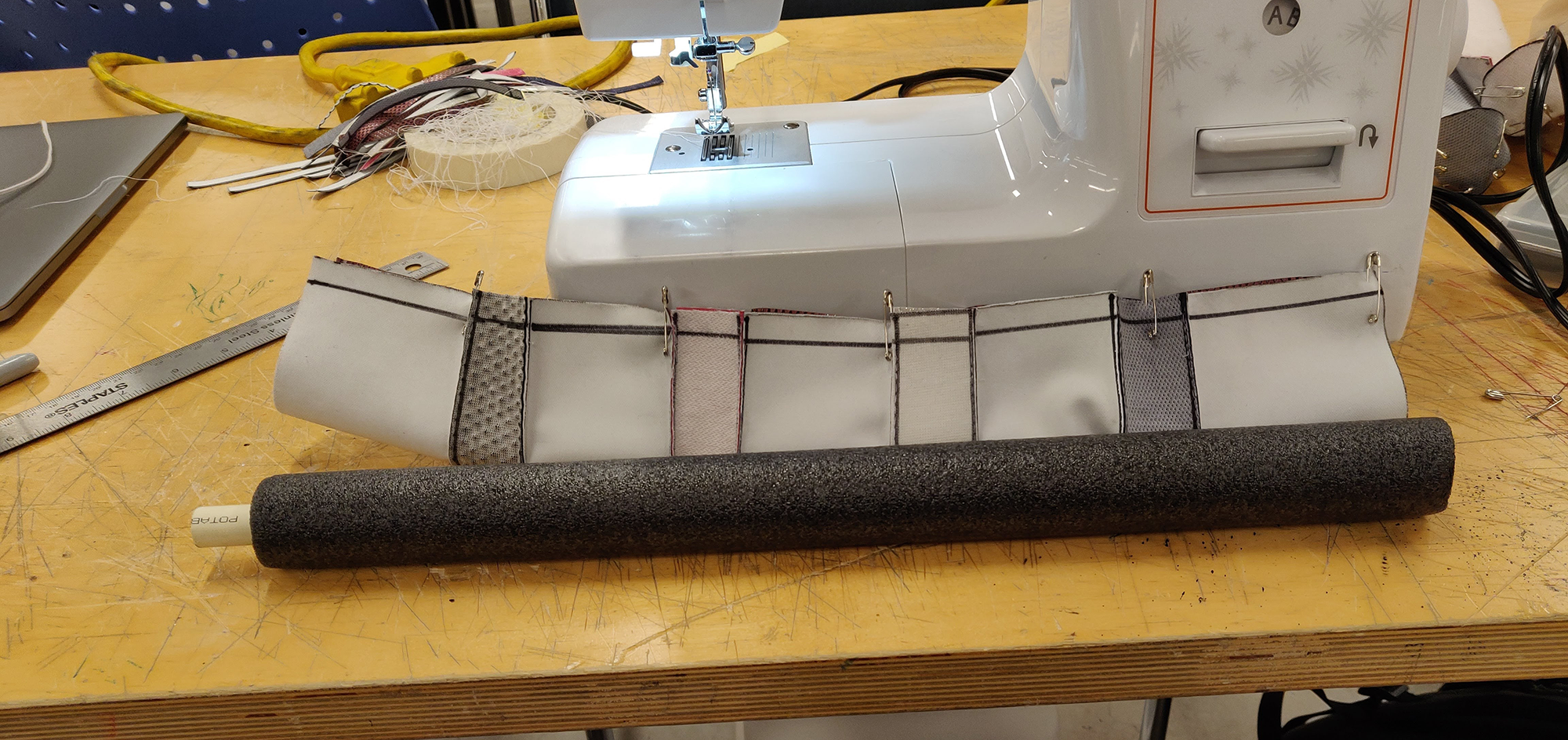Tactifoam Rods
Design Process
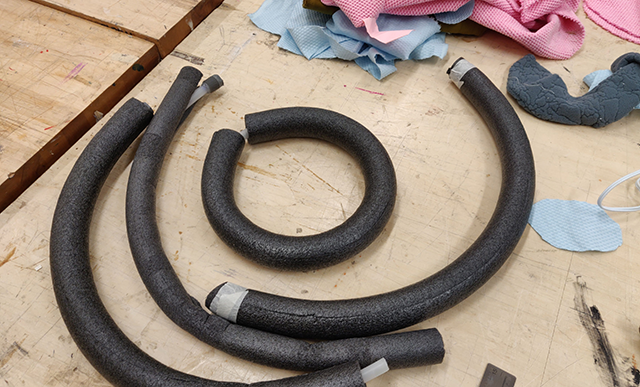
Our process began with establishing a knowledge base of common disabilities present at facilities such as the Beverley school. It was necessary to be prepared in order to gain insight from our in-person observations.
Each team attended a specific class: mine was one with pupils who had many of the most severe cognitive and physical impairments, with every pupil requiring mobility aids and assistance with basic tasks. I wrote notes and sketched as insight and ideas for how to help came to me.
We rapidly moved into rounds of concept sketching, first with ten rough sketches of different concepts, then ten sketches of one or two concepts, per team member. I focused on my insights regarding classroom space usage, proposing a mobility aid “carousel” to unite storage and playtime, and ceiling-mounted hooks on cables to store items above.
After refining to one concept per team member and working together to develop them, we proposed a design brief to guide the project forward, and design criteria outlining the “Must/Should/Could” features of our product(s). We prioritized pupil-to-pupil interactions, sensory stimulation, classroom suitability, and providing choices.
My research into potential forms post-brief hit on an interlocking ring form, found by studying toys for a comparable audience. At this point in the project, my teammate and I had combined concepts: a toy that had diversity of form and sensory stimuli (my concept), as well as had soft, tactile qualities similar to a pillow (teammate’s concept).
We each developed separate prototypes with shared qualities, but different forms and functionality. For mine, I made the assumption that the interlocking rings would be dangerous if made to be rigid, so my rings were made from a variety of foam materials that did not hold their shapes well, wrapped in textiles with diverse tactile qualities. My insights on this form proved well-founded, but the assumption was wrong: a rigid, but lightweight ring form would not pose any danger, it only needed to be food safe, in anticipation of the pupils trying to chew the toy.
Now settled on the interlocking rings concept, we attempted to manufacture rigid rings that could attach and detach to one another, introducing that as a design criteria due to the need for individual rings to be given to pupils for play after making choices. The technical challenge of fabricating detachable rings was too high for our time constraints, so we pivoted to a detachable rod concept that functioned similarly enough to the rings that we could still achieve our design criteria in time.
After falling behind due to the pivoting, we worked diligently on fabricating the rods and establishing their visual, tactile and audio qualities to great satisfaction. Some of the audio qualities required exploring different materials for the central tube, drilling holes in them, and trying different materials to fill them with (ball bearings, rock salt, beads, etc).
Results
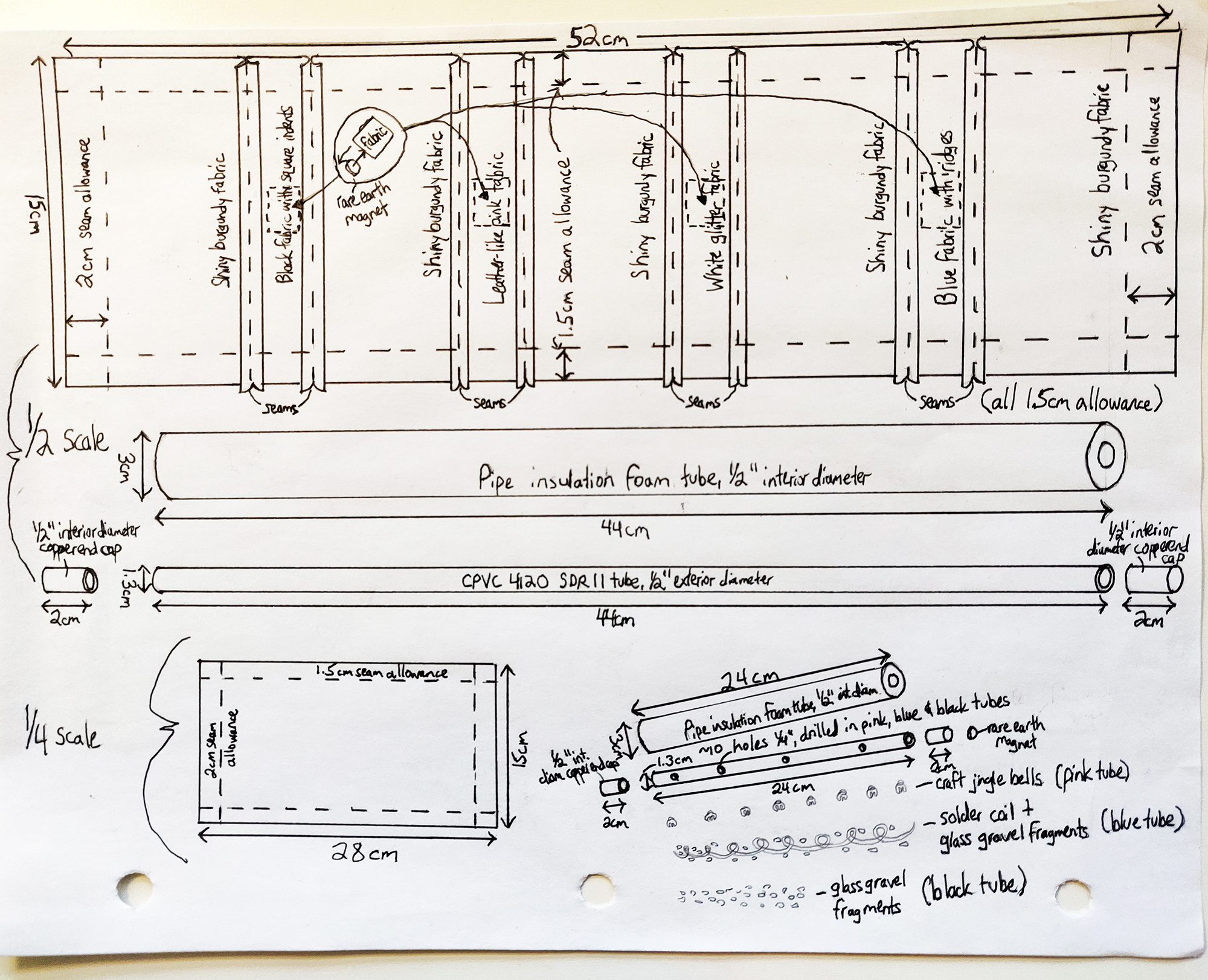
- OCAD University: Bachelor of Design (Industrial Design)
- September-December 2019

